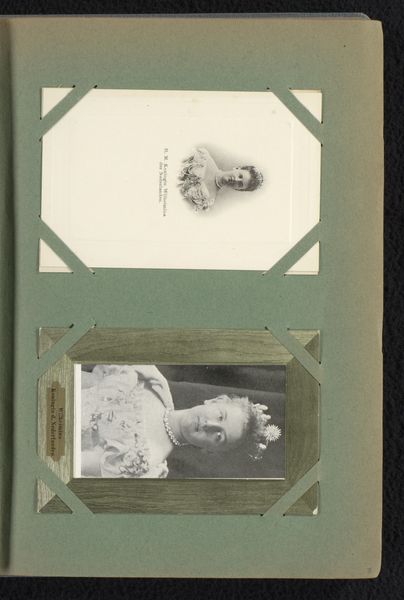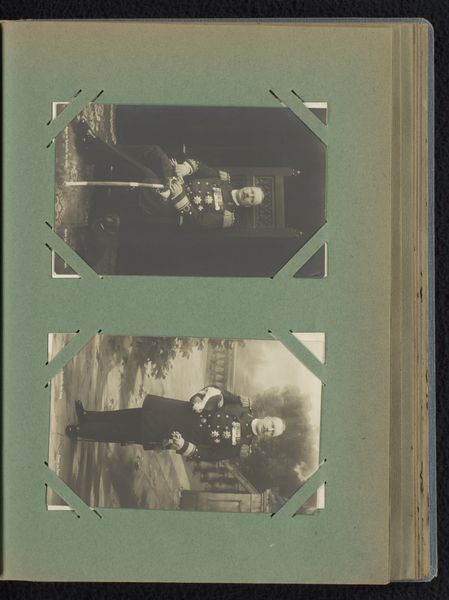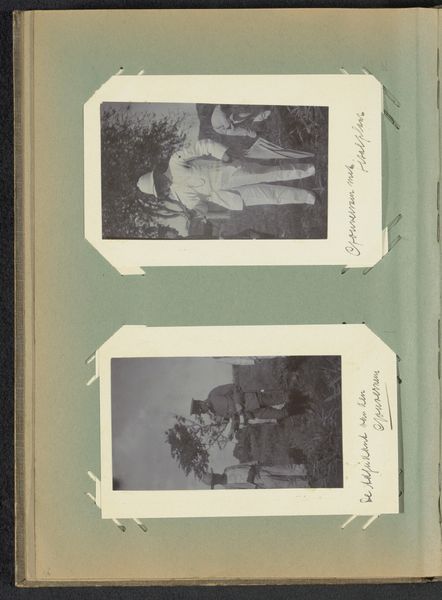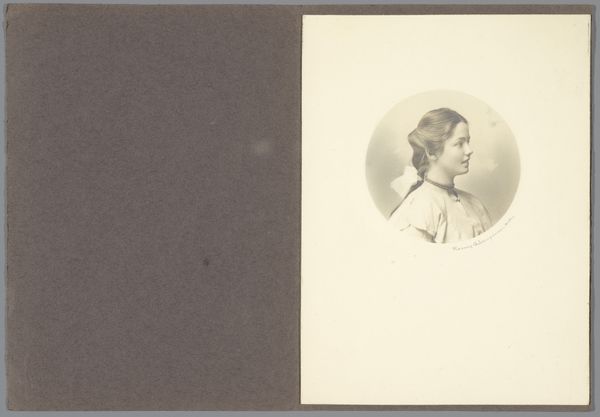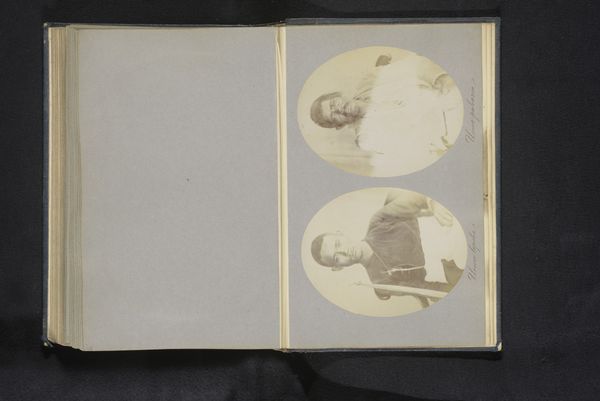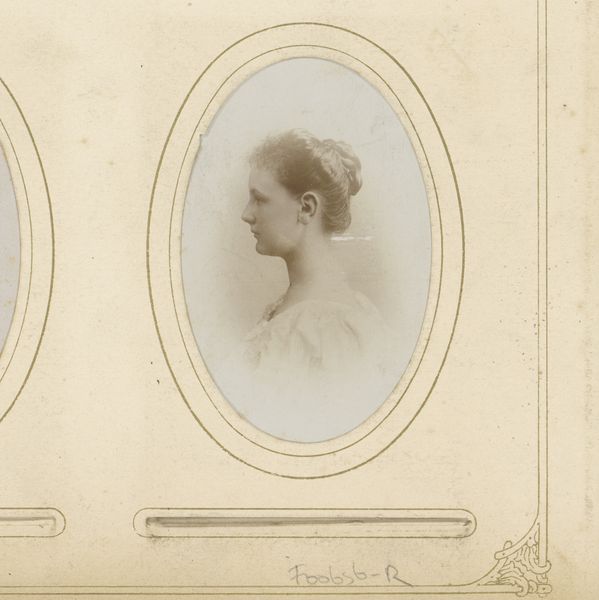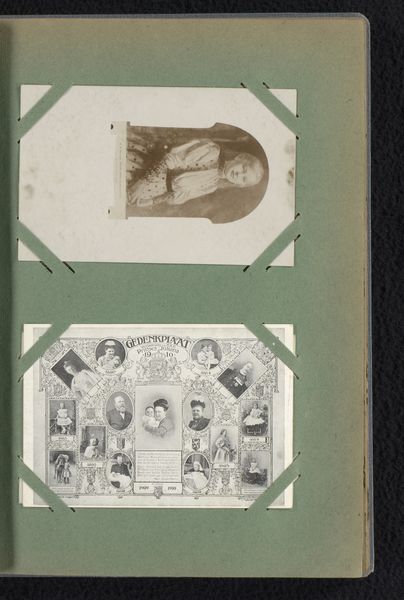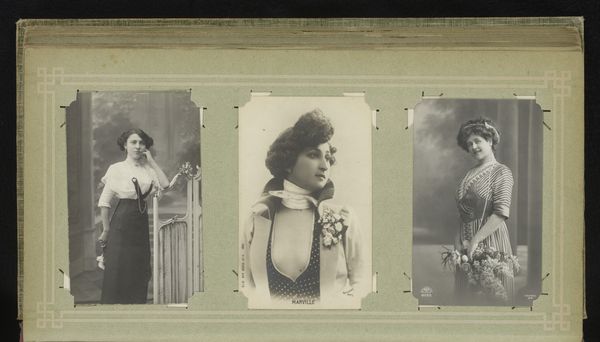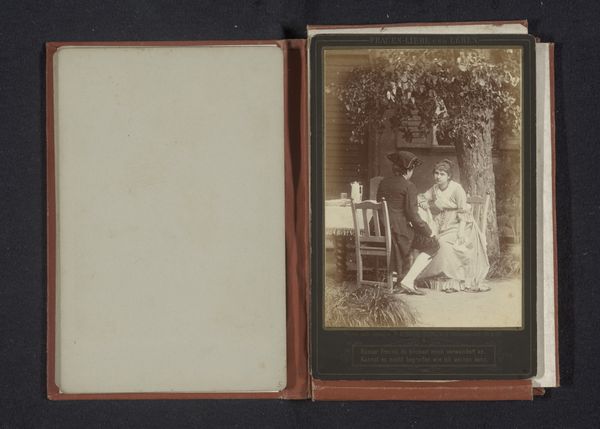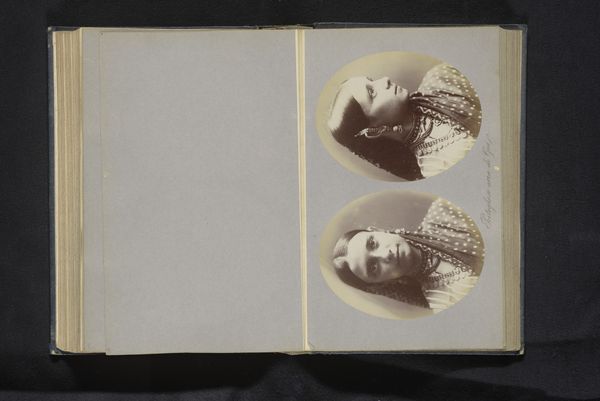
print, photography, albumen-print
#
portrait
# print
#
photography
#
history-painting
#
albumen-print
Dimensions: height 137 mm, width 86 mm
Copyright: Rijks Museum: Open Domain
Editor: Here, we have "Two Postcards with Portraits of Queen Wilhelmina," taken around 1908 by Guy de Coral & Co., presented as albumen prints within what seems to be an album page. The contrast between the sharp focus on Wilhelmina and the soft, almost faded background is striking. What catches your eye in these portraits? Curator: Immediately, the meticulous rendering of textures stands out: the precise detail in her ermine stole, the elaborate embroidery on her gown, and the stark, almost clinical, delineation of her facial features. Notice how the formal composition, particularly in the lower portrait with her full figure, emphasizes verticality, conveying authority and a certain stoicism. Editor: I see that. Do you think that the choice of albumen print enhances these formal qualities? Curator: Undoubtedly. The albumen process lends a particular tonal range, favoring crisp highlights and rich mid-tones, which serve to accentuate the regal bearing. Observe also the controlled symmetry in both portraits, and the compositional choices that reflect established conventions of portraiture intended to communicate power and permanence. Editor: So, it's less about capturing a likeness and more about conveying a message through form and structure? Curator: Precisely. The intrinsic elements - composition, texture, tone - serve to uphold a particular representation of monarchy. One might deconstruct it further through semiotic analysis, noting how each carefully chosen element contributes to a codified language of power. Editor: That's fascinating; I never considered photography through such a structural lens before. Thank you. Curator: It reveals how even seemingly straightforward portraits can be deeply constructed, when we attend to their formal properties.
Comments
No comments
Be the first to comment and join the conversation on the ultimate creative platform.
